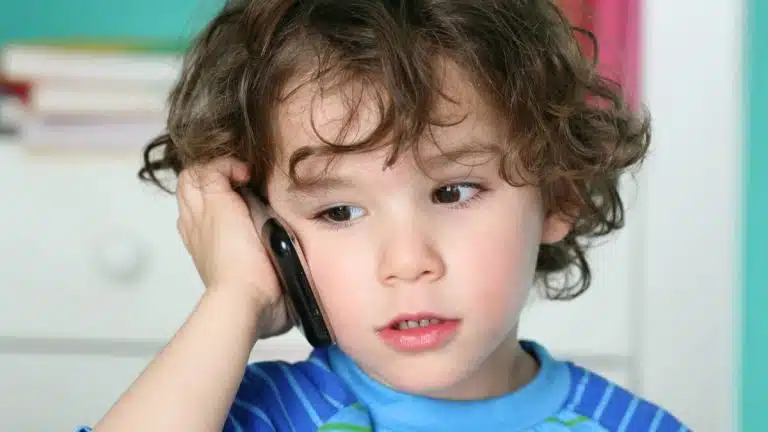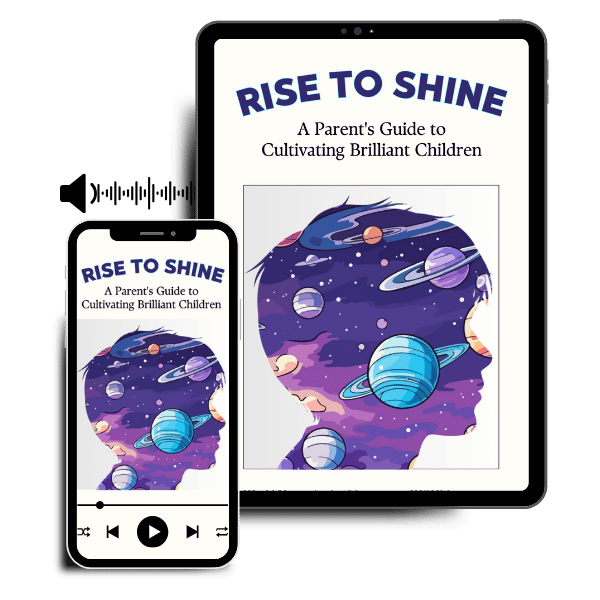Language Skills for 3-Year-Olds: Speech Milestones & Checklists


Welcome, dear parents and caregivers! Are you excited yet slightly puzzled by the world of words unfolding before your 3-year-old? You’re not alone. Language development at this age is a thrilling, intricate maze—a magical space where “Mom” and “Dad” evolve into full-blown conversations.
This guide aims to be your navigational star. Here, you’ll discover vital milestones, creative activities, and even early warning signs, all designed to ensure your little one becomes a confident communicator.
From speech delays to the wonders of bilingualism, we’ve got it all covered. So please sit back, read on, and let’s turn this developmental journey into a joyful ride for you and your child!
What You Can Typically Expect
When your child hits the ripe age of three, the realm of language transforms into an exciting playground. Words and sentences flow more freely, and your little one likely shifts from mimicking sounds to crafting unique, expressive phrases. But what exactly should you anticipate during this language evolution?
At three, most kids possess a vocabulary of about 200 to 1,000 words. Suddenly, ‘yes’ and ‘no’ give way to nuanced expressions like ‘I don’t want to.’
Expect sentences to expand. Your child might surprise you with multi-word sentences such as ‘Mommy, let’s go to the park,’ demonstrating both grammatical understanding and a grasp of context.
Your child starts to follow simple directions and may even respond to questions with thoughtful answers. Conversations begin to feel more like two-way streets.
Prepare for imaginative tales featuring superheroes or magical creatures! Storytelling reflects a growing ability to sequence events and identify characters.
In summary, your 3-year-old’s language skills aren’t just growing—they’re soaring. Every day brings new words, sentences, and opportunities for meaningful interaction. Stay tuned because this thrilling journey of verbal exploration is just getting started!
| Milestone | Checked |
|---|---|
| Vocabulary & Word Use | |
| Uses 200-1,000 words | [ ] |
| Forms simple sentences with 4-5 words | [ ] |
| Knows names of familiar objects and animals | [ ] |
| Uses words like "in," "on," and "under" | [ ] |
| Uses possessives, like "my," "mine," "his" | [ ] |
| Pronunciation & Sound Patterns | |
| Pronounces most vowels and consonants | [ ] |
| Uses K and G sounds correctly (e.g., "go," "kite") | [ ] |
| Pronunciation is understood by unfamiliar adults | [ ] |
| Understanding & Comprehension | |
| Understands most sentences and questions | [ ] |
| Follows two-step instructions | [ ] |
| Recognizes basic colors | [ ] |
| Understands opposites like "big" and "small" | [ ] |
| Grammar & Sentence Structure | |
| Understands "is," "are," "he," "she" | [ ] |
| Asks many questions including "why" and "how" | [ ] |
| Joins sentences using "and," "but" | [ ] |
| Social & Conversational Skills | |
| Takes turns in conversation | [ ] |
| Uses polite phrases like "please" and "thank you" | [ ] |
| Can briefly describe a simple event | [ ] |
| Expresses emotions and desires through words | [ ] |
This checklist helps you see what language skills most 3-year-olds have. If you find things your child isn’t doing yet, you can either practice more at home or think about talking to a speech therapist for helpful advice.
When to Start Worrying and Seek Help
While language development is often a joyous journey, it has bumps and detours. Recognizing potential speech delays early can make a significant difference, offering a clearer path forward.
Related: Recognizing Developmental Delays in Children: Key Signs to Watch for
If, by age three, your child has fewer than 100 words in their arsenal or doesn’t form two-word phrases independently, it might signal a delay worth investigating.
Should your child consistently fail to respond to their name or simple instructions, consider this a red flag. It’s not just about speaking but also understanding and reacting to spoken cues.
While 3-year-olds might not speak with perfect clarity, most of what they say should be understandable. If deciphering your child’s speech often feels like cracking a code, it’s time to consult a professional.
If your young one shies away from social interactions or doesn’t seem to grasp simple conversational cues, they might benefit from a speech or language evaluation.
Rest assured, early intervention can be remarkably effective. What’s heartening to note is that many children with language delays catch up swiftly when given the appropriate guidance and support. This isn’t an occasion for panic but an opportunity for proactive action.
A vigilant eye and prompt action can pave the way for a smoother, more enriching language development journey. Take heart, you’re doing great!
If you’ve noticed persistent challenges in your child’s speech or language development, it might be time to weigh the merits of professional intervention. Early help often makes a difference, as does choosing the right approach and specialist.
Screening tests are usually the first step. They can pinpoint specific areas where your child might need extra assistance.
While one-on-one sessions offer personalized guidance, group settings can be beneficial, too, especially for social language skills.
Different experts can address various aspects of language development, from speech-language pathologists to occupational therapists.
Most health insurance plans offer some coverage for speech therapy. Research your options, and don’t hesitate to ask providers about sliding scale fees if necessary.
Fun Ways to Boost Speech and Vocabulary
You’ll be delighted to learn that boosting your child’s language abilities doesn’t have to be all work and no play. Here’s a quick rundown of playful yet effective strategies to amp up your 3-year-old’s verbal prowess.
Rhyming games not only fuel imagination but also enrich vocabulary. “Does cat rhyme with bat or tree?” Keep it light and fun!
Provide a series of pictures and let your child create a narrative. This activity fosters sequencing skills and injects fresh words into your child’s vocabulary.
Elevate the classic “Simon Says” game by adding descriptive words. Instead of “Simon says, jump,” try, “Simon says, jump excitedly!”
Turn word learning into a festive activity. Create flashcards with vivid images and words, and watch your child’s face light up as they recognize and articulate each one.
Turn everyday outings into vocabulary adventures. Spot a tree? How about discussing what makes it tall, green, or leafy?
One of the most delightful paths to language mastery involves delving into the vibrant world of books. Fortunately, you need not wait for formal schooling to begin this adventure. Here’s how you can nourish a budding bibliophile at home.
To delve even deeper into the transformative power of early reading, we invite you to read our related article, “Influence Of Reading To Children On Early Language Development.”
In this article, you’ll find comprehensive insights that illuminate how reading shapes language skills from infancy through preschool and beyond.
Keys to Meaningful Interactions
While your 3-year-old’s language is rapidly blossoming, you might wonder how to converse meaningfully and engagingly. No need to worry! Here are some straightforward tips to ensure effective communication.
Replicating your child’s linguistic style can bridge gaps. If they say, “Me want juice,” you can respond, “You want some juice? Let’s get it!”
Literally, get down to their level. Squat or sit so you’re eye-to-eye. This simple act shows that you genuinely value their words.
While your sentences should be easy to understand, also aim for completeness to model good sentence structure. For instance, instead of saying, “Up!” when lifting them, say, “Let’s go up!”
Instead of yes-or-no questions, offer choices. “Would you like apple slices or grapes?” This promotes decision-making and exposes them to different sentence structures.
Offer nods, smiles, and brief verbal affirmations like “I see” or “Really?” to encourage them to share more.
Related: Nurturing Child Development: The Power of Open Communication
If your child says, “I’m mad,” respond empathetically with, “You’re mad? Tell me why.” This approach validates their emotions and enhances vocabulary.
In essence, meaningful conversations with a 3-year-old aren’t merely about language. They’re opportunities for nurturing emotional intelligence, social skills, and cognitive growth. With these simple techniques, you’re well on your way to raising a talker and a thoughtful communicator.
Have you considered introducing a second language to your curious 3-year-old? The benefits of bilingualism range from cognitive enhancements to future career advantages. And guess what? The prime time to start might be sooner than you think!
While we could dive deep into the strategies and benefits, we already have some invaluable resources. We invite you to explore our comprehensive blog posts specifically tailored to bilingualism. There, you’ll find in-depth insights, practical tips, and many benefits of raising a bilingual child.
Related Articles:
Friendships as Building Blocks for Verbal Skills
You may be surprised to learn that the friendships your child forms can be vital stepping stones to advanced language skills. Human interaction and play-based communication often provide the richest learning environments.
Related: The Benefits of Nature Play: How Outdoor Exploration Helps Children Thrive
Organize playdates with peers. Not only does this promote social skills, but it also encourages dialogues, question-asking, and real-world vocabulary usage
Consider enrolling your child in group activities such as arts and crafts or a sports class. These settings naturally foster interactive conversations and complex sentence formation.
Limit screens and other distractions. Pay attention to the significance of family as the first social circle. Inclusive family discussions help your child practice listening, taking turns, and articulating thoughts clearly.
Older siblings, cousins, or family friends can serve as language mentors. Kids often emulate adults or older children, effortlessly picking up new words and phrases.
Navigating the intricate landscape of language development for your 3-year-old can feel like a journey full of twists, turns, and delightful discoveries. From mastering milestones to enriching vocabulary through books, games, and social interactions, every step counts in molding capable communicators for the future.
If concerns arise, remember early intervention is often crucial. Consult experts, read widely, and, most importantly, engage with your child in enlightening and heartwarming ways. Your active role today paves the way for their articulate, confident selves tomorrow.
We extend our deepest gratitude for letting us be a part of this remarkable chapter in your parenting voyage. Until our next enlightening encounter, happy talking, reading, and connecting!
References

Get Your Resources to Your Email Now!
Comment (1)
Frank Malamula
The information has been very helpful